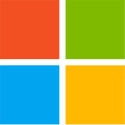
Microsoft Adding Eye Control Capabilities to Windows, Improve Accessibility
People with disabilities typically find themselves in an uphill battle in a world that simply isn't geared for them. In everything, the economies of scale dominate, the cost/benefit ratios are weighed... And even though the disabled segment of the population is a significant one, measures to cope with their difficulties are seldom implemented due to that same economic cost/benefit ratio - though this has been steadily improving over the years (at great credit for humanity, I might say.)
Microsoft has now announced that it has partnered with Tobii (best known for their gaming-oriented eye-tracking products), in a bid to increase accessibility in its Windows OS. The work has gone towards implementing eye-tracking technology that can be used by people with motor disabilities to control a mice and keyboard on-screen. Available in the latest Insider Preview builds, Eye Control currently requires a specific piece of Tobii hardware (like the Tobii 4C, though support will definitely extend to other Tobii products in time), which unlocks access to the Windows operating system to be able to do the tasks one could previously accomplish with a physical mouse and keyboard.
Microsoft has now announced that it has partnered with Tobii (best known for their gaming-oriented eye-tracking products), in a bid to increase accessibility in its Windows OS. The work has gone towards implementing eye-tracking technology that can be used by people with motor disabilities to control a mice and keyboard on-screen. Available in the latest Insider Preview builds, Eye Control currently requires a specific piece of Tobii hardware (like the Tobii 4C, though support will definitely extend to other Tobii products in time), which unlocks access to the Windows operating system to be able to do the tasks one could previously accomplish with a physical mouse and keyboard.


